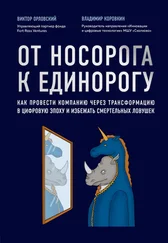Jensen, Michael C., and William H. Meckling. “Theory of the Firm: Managerial Behavior, Agency Costs and Ownership Structure.” Journal of Financial Economics3, no. 4 (1976): 305–60.
Личная заинтересованность менеджеров
Bergstresser, Daniel, and Thomas Philippon. “CEO Incentives and Earnings Management.” Journal of Financial Economics80, no. 3 (2006): 511–29.
Greve, Henrich R., Donald Palmer, and Jo-Ellen Pozner. “Organizations Gone Wild: The Causes, Processes, and Consequences of Organizational Misconduct.” Academy of Management Annals 4, no. 1 (2010): 53–107.
McAnally, Mary Lea, Anup Srivastava, and Connie D. Weaver. “Executive Stock Options, Missed Earnings Targets, and Earnings Management.” Accounting Review83, no. 1 (2008): 185–216.
Игра «Ультиматум»
Cameron, Lisa A. “ Rai sing the Stakes in the Ultimatum Game: Experimental Evidence from Indonesia.” Economic Inquiry37, no. 1 (1999): 47–59.
Güth, Werner, Rolf Schmittberger, and Bernd Schwarze. “An Experimental Analysis of Ultimatum Bargaining.” Journal of Economic Behavior & Organi-zation3, no. 4 (1982): 367–88.
Kahneman, Daniel, Jack L. Knetsch, and Richard H. Thaler.(1986). “Fairness and the Assumptions of Economics.” Journal of Business59, S4 (1986): S285–300.
Thaler, Richard H. “Anomalies: The Ultimatum Game.” Journal of Economic Perspectives2, no. 4 (1988): 195–206.
Ограниченная этичность и поведенческая этика
Ariely, Dan. The (Honest) Truth About Dishonesty: How We Lie to Everyone-Especially Ourselves. New York: HarperCollins, 2012.
Bazerman, Max H., George Loewenstein, and Don A. Moore . “Why Good Accountants Do Bad Audits.” Harvard Business Review, November 2002.
Bazerman, Max H., and Don A. Moore. Judgment in Managerial Decision Making. Hoboken, NJ: Wiley, 2008.
Bazerman, Max H., and Francesca Gino. “Behavioral Ethics: Toward a Deeper Understanding of Moral Judgment and Dishonesty.” Annual Review of Law and Social Science8 (2012): 85–104.
Bazerman, Max H., and Ann E. Tenbrunsel. Blind Spots: Why We Fail to Do What’s Right and What to Do About It. Princeton, NJ: Princeton University Press, 2011.
Haidt, Jonathan. “The New Synthesis in Moral Psychology.” Science 316 (2007): 998–1002.
Harvey, Ann H., et al. “Monetary Favors and Their Influence on Neural Responses and Revealed Preference.” Journal of Neuroscience30, no. 28 (2010): 9597–9602.
Kluver, Jesse, Rebecca Frazier, and Jonathan Haidt . “Behavioral Ethics for Homo Economicus, Homo Heuristicus, and Homo Duplex.” Organizational Behavior and Human Decision Processes123, no. 2 (2014): 150–58.
Разница подходов к совершению ошибки и упущению возможности
Paharia, Neeru, et al. “Dirty Work, Clean Hands: The Moral Psychology of Indirect Agency.” Organizational Behavior and Human Decision Processes109, no. 2 (2009): 134–41.
Spranca, Mark, Elisa Minsk, and Jonathan Baron. “Omission and Commission in Judgment and Choice.” Journal of Experimental Social Psychology27, no. 1 (1991): 76–105.
Раскрытие информации
Cain, Daylian M., George Loewenstein, and Don A. Moore. (2005). “The Dirt on Coming Clean: Perverse Effects of Disclosing Conflicts of Interest.” Journal of Legal Studies34, no. 1 (2005): 1–25.
Разное
Smith, Adam. The Wealth of Nations . Edited, with an Introduction and Notes by Edwin Cannan. New York: Modern Library, 1994.
Глава 10
Типологии искажений и способов борьбы с ними
Bazerman, Max H., and Don A. Moore. Judgment in Managerial Decision Making. Hoboken, NJ: Wiley, 2008.
Dobelli, Rolf. The Art of Thinking Clearly . Translated by Nicky Griffin. New York: HarperCollins, 2013.
Dolan, Paul, et al. “MINDSPACE: Influencing Behaviour Through Public Policy.” Cabinet Office and Institute for Government, London, UK, 2010.
Finkelstein, Sydney, Jo Whitehead, and Andrew Campbell. Think Again: Why Good Leaders Make Bad Decisions and How to Keep It from Happening to You. Boston: Harvard Business Press, 2008.
Halpern, David. Inside the Nudge Unit: How Small Changes Can Make a Big Difference . New York: W. H. Allen, 2015.
Heath, Chip, and Dan Heath. Decisive: How to Make Better Choices in Life and Work. New York: Crown Business, 2013.
Service, Owain, et al. “EAST: Four Simple Ways to Apply Behavioural Insights.” Behavioural Insights Ltd. and Nesta. April 2014.
Tversky, Amos, and Daniel Kahneman. “Judgment Under Uncertainty: Heuris-tics and Biases.” Science 185 (1974): 1124–31.
Опасность списывания всех неудач на искажения
Rosenzweig, Phil. Left Brain, Right Stuff: How Leaders Make Winning Decisions . New York: Public Affairs, 2014.
Реестры приобретений
Bruner, Robert F . “Does M&A Pay? A Survey of Evidence for the Decision-Maker.” Journal of Applied Finance 12, no. 1 (2002): 48–68.
Cartwright, Susan, and Richard Schoenberg. “ Thirty Years of Mergers and Acquisitions Research: Recent Advances and Future Opportunities.” British Journal of Management 17, Suppl. 1 (2006).
Datta, Deepak K., George E. Pinches, and V. K. Narayanan. “Factors Influencing Wealth Creation from Mergers and Acquisitions: A Meta-Analysis.” Strategic Management Journal 13, no. 1 (1992): 67–84.
Литература по теме «Недооценка конкурентов» см. литературу Главы 4, о прекращении инвестирования в неудачные проекты см. литературу Главы 5.
Глава 11
Попытки преодолеть влияние искажений
Dobelli, Rolf. The Art of Thinking Clearly .Translated by Nicky Griffin. New York: HarperCollins, 2013.
Finkelstein, Sydney, Jo Whitehead, and Andrew Campbell. Think Again: Why Good Leaders Make Bad Decisions and How to Keep It From Happening to You. Boston: Harvard Business Press, 2008.
Hammond, John S., Ralph L. Keeney, and Howard Raiffa. “The Hidden Traps in Decision Making.” Harvard Business Review, January 2006, 47–58.
Слепое пятно искажений
Fischhoff, Baruch. “Debiasing.” In Judgment Under Uncertainty: Heuristics and Biases, edited by Daniel Kahneman, Paul Slovic, and Amos Tversky, 422–44. Cambridge: Cambridge University Press, 1982.
Milkman, Katherine L., Dolly Chugh, and Max H. Bazerman . “How Can Decision Making Be Improved?” Perspectives on Psychological Science4, no. 4 (2009): 379–83.
Morewedge, Carey K., et al. “Debiasing Decisions: Improved Decision Makingwith a Single Training Intervention.” Policy Insights from the Behavioral and Brain Sciences2, no. 1 (2015): 129–40.
Nisbett, Richard E. Mindware: Tools for Smart Thinking . New York: Farrar, Straus and Giroux, 2015.
Pronin, Emily, Daniel Y. Lin, and Lee Ross. “ The Bias Blind Spot: Asymmetric Perceptions of Bias in Others Versus the Self.” Personality and Social PsychologyBulletin28, no. 3 (2002): 369–81.
Читать дальше
Конец ознакомительного отрывка
Купить книгу




![Владимир Коровкин - От носорога к единорогу [Как провести компанию через трансформацию в цифровую эпоху и избежать смертельных ловушек] [litre](/books/393888/vladimir-korovkin-ot-nosoroga-k-edinorogu-kak-pro-thumb.webp)



